第59章 MONEY OR SIMPLE CIRCULATION(40)
We have seen that gold and silver cannot comply with the demand that as money they should have an invariable value.Their value is nevertheless more stable than that of other commodities on the average,as even Aristotle noted.Apart from the general effect of an appreciation or depreciation of the precious metals,variations in the relative value of gold and silver are of particular importance,since both are used side by side as monetary material on the world market.The purely economic reasons of such changes in value --conquests and other political upheavals,which exerted a substantial influence on the value of metals in antiquity,have merely a local and temporary effect --must be attributed to changes in the labour-time required for the production of these metals.This labour-time itself will depend on the relative scarcity of natural deposits and the difficulties involved in procuring them in a purely metallic state.Gold is in fact the first metal that man discovered.On the one hand,it occurs in nature in pure crystalline form,as a separate substance not chemically combined with other substances,or in a virgin state,as the alchemists said;on the other hand,nature herself performs the technical work by washing gold on a large scale in rivers.Only the crudest labour is required on the part of man for extracting gold either from rivers or from alluvial deposits;whereas production of silver requires mining and in general a relatively high level of technical development.The value of silver is therefore originally higher than that of gold,although it is absolutely less scarce.Strabo's statement that an Arabian tribe gave ten pounds of gold for one pound of iron,and two pounds of gold for one pound of silver,is by no means incredible.
But the value of silver tends to fall in relation to that of gold,as the productive powers of social labour develop and consequently the product of simple labour becomes more expensive compared with that of complex labour,and with the earth's crust being increasingly opened up the original surface-sources of gold are liable to be exhausted.Finally,at a given stage of development of technology and of the means of communication,the discovery of new territories containing gold or silver plays an important role.The ratio of gold to silver in ancient Asia was 6to 1or 8to 1;the latter ratio was prevalent in China and Japan even in the early nineteenth century;10to 1,the ratio obtaining in Xenophon's time,can be regarded as the average ratio of the middle period of antiquity.The working of the Spanish silver mines by Carthage and later by Rome exerted a rather similar influence on the ancient world to that of the discovery of the American mines on modern Europe.
During the era of the Roman emperors,15or 16to 1can be taken as the rough average,although the value of silver in Rome often sank even lower.During the following period reaching from the Middle Ages to modern times,a similar movement which begins with a relative depreciation of gold and ends with a fall in the value of silver takes place.The average ratio in the Middle Ages,as in Xenophon's time,was 10to l,and as a result of the discovery of mines in America the ratio once again becomes 16or 15to 1.The discovery of gold in Australia,California and Colombia will probably lead to another fall in the value of gold.[3]
FOOTNOTES
[1.]"A peculiar feature of metals is that in them alone all relations are reduced to a single one,that is their quantity,for by nature they are not distinguished by differences in quality either in their internal composition or in thcer external form and structure"(Galiani,op.cit.,pp.126-27).
[2.]In the year 760a crowd of poor people turned out to wash gold from the sand of the river south of Prague,and three men were able in a day to extract a mark [half a pound]of gold;and so great was the consequent rush to "the diggings"and the number of hands attracted from agriculture so great,that in the next year the country was visited by famine.(See M.G.Korner,Abhandlung von dem Alterthum des böhmischen Bergwerks ,Schneeberg,17581P.37seg.].)[3.]The relative value of gold and silver up to now has not been affected by the Australian and other discoveries.Michel Chevalier's contention that the opposite is the case is worth no more than the socialism of this ex-St.-Simonist.
Quotations on the London market show,indeed,that between 1810and 1858the average price of silver in terms of gold was nearly 3per cent higher than in the period between 1830and 1850;but this rise was simply due to the demand of Asian countries for silver.Silver prices between 1852and 1858change in different years and months solely in accordance with this demand and by no means in accordance with the supply of gold from the newly discovered sources.